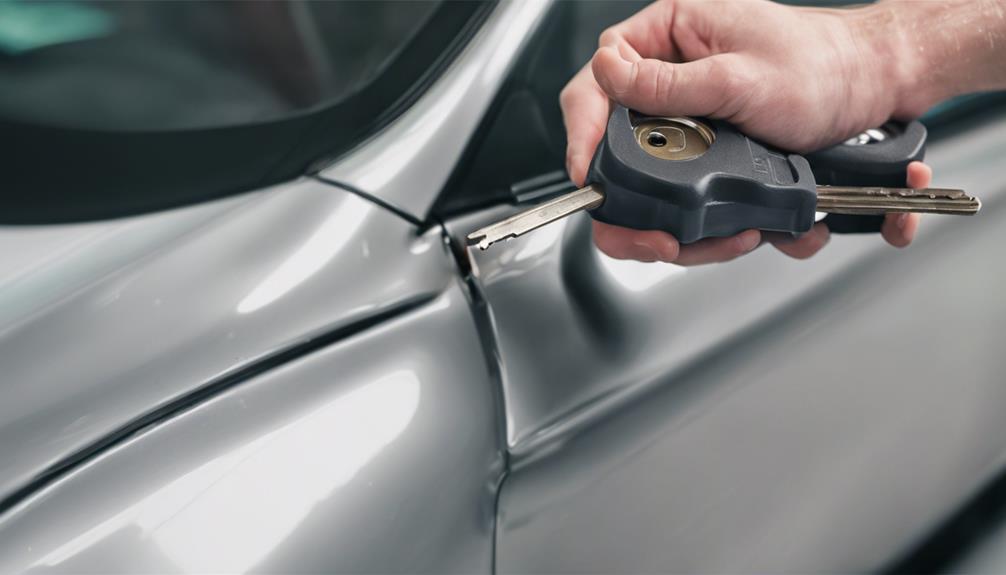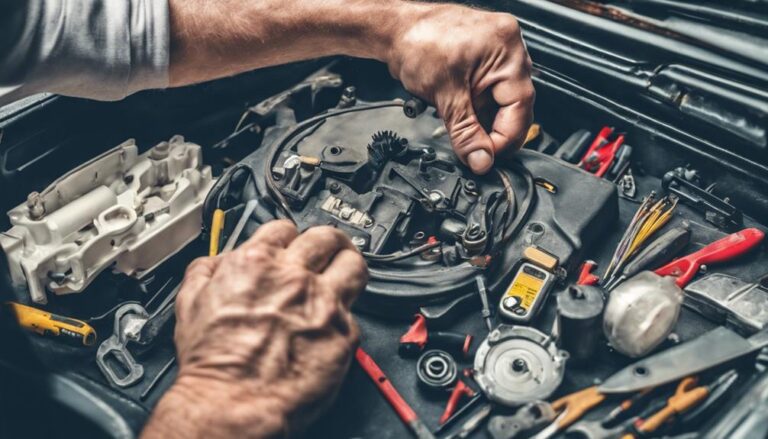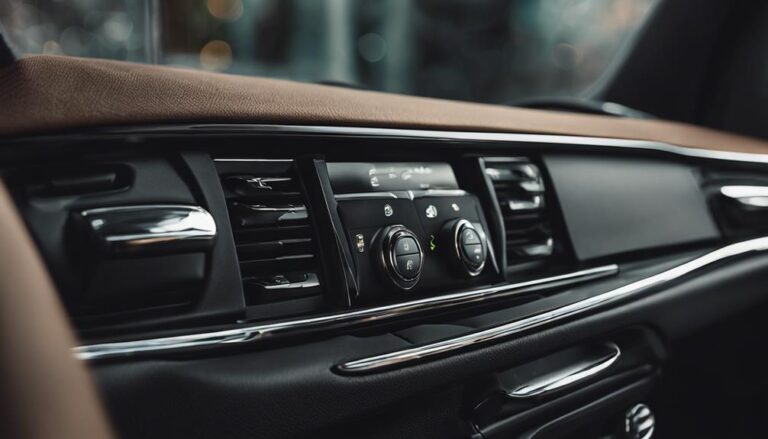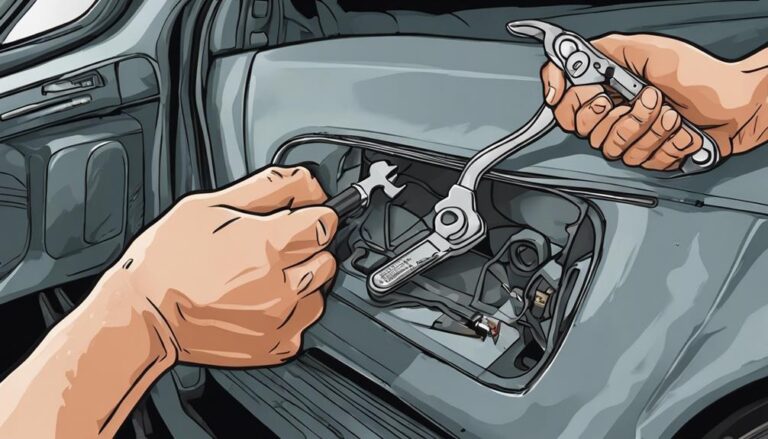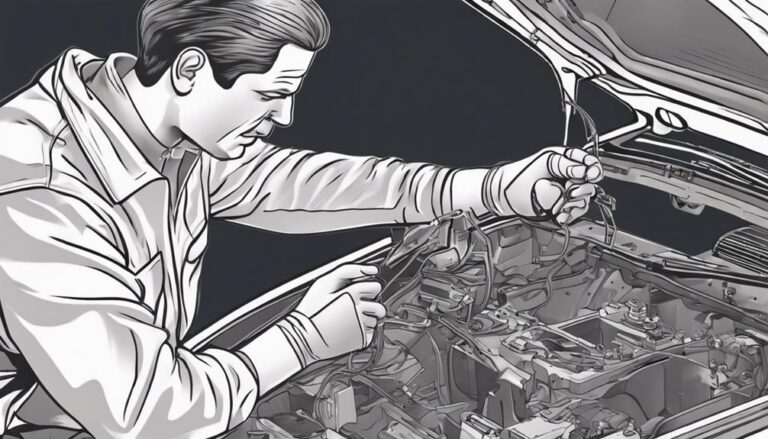Simple Solutions for Jammed Car Door Locks
If you've ever experienced the frustration of a jammed car door lock, you're not alone. In fact, according to a recent survey, over 30% of drivers have encountered this issue at least once.
But fear not, simple solutions exist to tackle this common problem. By implementing a few straightforward steps, you can potentially save yourself time and money.
So, why not explore these easy fixes to regain access to your vehicle effortlessly?
Key Takeaways
- Use penetrating catalyst or WD-40 for jammed locks
- Purchase lubricants from stores or online
- Apply directly into keyhole for effective results
- Seek professional help if lock remains jammed
Lubricating the Car Door Lock
To effectively lubricate the car door lock, begin by selecting a penetrating catalyst or WD-40 for best loosening of the mechanism. These lubricants can be purchased from a home improvement store, an auto supply shop, or online for your convenience.
When dealing with a jammed car lock, applying the lubricant directly into the keyhole is vital. If you opt for WD-40, using a long straw attachment can help reach deep into the lock mechanism for better coverage.
After applying the lubricant, insert the key into the lock and gently try to turn it to open the door. Avoid forcing the key if the lock remains jammed, as this can cause further damage. If the lock still doesn't budge, it may be time to seek assistance from a professional repair shop. They have the expertise and tools to handle more complex lock issues efficiently.
Checking for Debris in the Lock
Inspect the car door lock for any debris such as dirt, dust, or rust that may be causing a jam. Ensuring the lock is free from obstructions is vital for smooth operation. Here's how you can effectively check for debris in the lock:
- Examine the Keyhole: Look closely at the keyhole for any foreign objects that could be impeding the key's insertion or rotation.
- Use a Flashlight: Illuminate the lock mechanism with a flashlight to identify any hidden debris inside the lock that may not be visible at first glance.
- Cleaning the Lock: Utilize a soft brush or compressed air to dislodge and remove any debris present in the lock. Thorough cleaning can help restore proper functionality to the lock.
Regularly maintaining and cleaning the car door lock is essential to prevent the build-up of debris that can lead to jamming issues. By following these steps, you can guarantee your car door lock operates smoothly and efficiently.
Adjusting the Door Latch
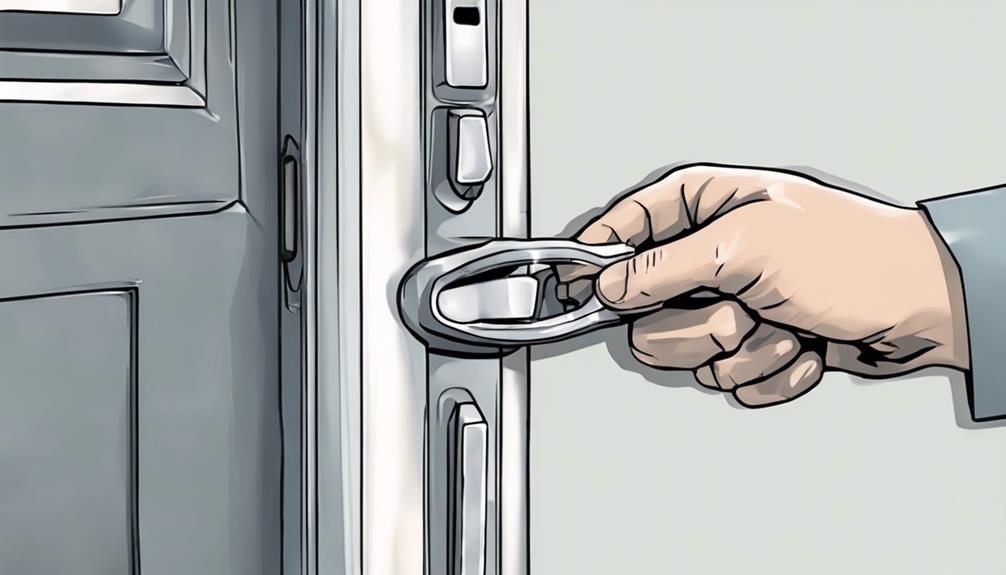
Check the alignment of the door latch by loosening and adjusting the screws that secure it in place. Make sure to move the latch slightly to realign it with the striker plate on the door frame. Once properly aligned, tighten the screws back in place. This adjustment can often unjam the lock and resolve issues with misaligned car door locks. To assist you further, refer to the table below for a clearer understanding of the door latch and lock mechanism:
| Door Panel | Door Lock Mechanism |
|---|---|
| Protects inner components | Consists of a moveable metal piece |
| Covers the door frame | Engages with a rod to secure/release |
To adjust the door latch, you may need to remove the door panel to access the mechanism. Apply a small amount of WD-40 to ensure smooth movement of the latch. After making the adjustments, test the door lock to ensure it functions correctly. This straightforward process can save you time and hassle with jammed car door locks.
Testing the Power Window Operation
If experiencing issues with your power windows, guarantee a smooth operation by testing the functionality of the window switches. To make sure your power windows are working correctly, follow these steps:
- Check the Window Alignment: Press the window switch and observe if the window moves up and down smoothly without any misalignment issues.
- Listen for Unusual Noises: Pay attention for any strange noises when operating the power windows, as this could indicate underlying problems with the mechanism.
- Inspect the Window Seals: Make sure the power windows align properly with the window seals when closed to prevent water leaks and ensure proper sealing.
To perform these tests effectively, you may need to remove the door panel. Using a flathead screwdriver, carefully detach the handle plate to access the metal plate attached to the door handle. This will allow you to inspect the locking mechanism and troubleshoot any power window operation issues efficiently.
Seeking Professional Help
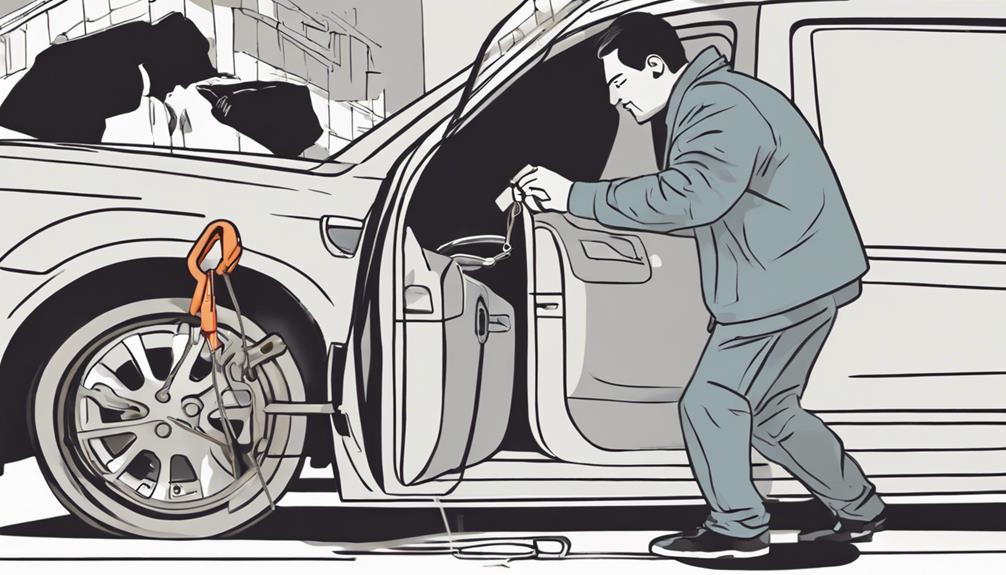
To address any persistent issues with jammed car door locks, consider seeking professional assistance from locksmith services equipped with specialized tools and expertise. Professional locksmiths have the knowledge and tools to handle complex lock problems efficiently.
When dealing with a jammed interior door lock, which is often attached to a rod mechanism close to the keyhole, locksmith services can diagnose and repair the issue accurately.
Locksmiths can use WD-40 or other lubricants to help move the rod within the door lock mechanism smoothly. Seeking professional help not only guarantees a quick and reliable solution but also prevents further damage to the lock or door mechanism.
Additionally, locksmiths can provide valuable advice on preventive maintenance measures to help prevent future lock jams.
Frequently Asked Questions
How Do You Free up a Seized Car Door Lock?
To free up a seized car door lock, use a penetrating catalyst like WD-40. Directly spray the lubricant into the keyhole, wiggle the key to loosen the mechanism gently. Avoid forcing the key to prevent further damage. If unsuccessful, seek professional assistance.
Is It OK to Put WD-40 in Car Door Lock?
Yes, it's okay to use WD-40 in a car door lock. It's safe for metal surfaces, prevents rust, and restores smooth operation. Remember, regular use maintains lock functionality. For alternatives, consult a locksmith for professional advice on DIY lock maintenance and common lock problems.
How Do You Unjam a Door Lock?
When unjamming a door lock, start by lubricating the mechanism with WD-40. Use a flathead screwdriver for key extraction if needed. Avoid damage by not forcing the key. Seek professional help if DIY methods fail to prevent future issues.
How Do You Fix a Car Door Lock That Won't Turn?
If your car door lock won't turn, try lubricating it with WD-40 or a penetrating catalyst. Look for rust or dirt causing the issue. Avoid forcing the key. If stuck, seek professional help.
Conclusion
To sum up, addressing jammed car door locks can be a simple task with the right approach. By lubricating the lock, checking for debris, adjusting the door latch, and testing the power window operation, you can resolve the issue efficiently.
Remember to seek professional help if needed and practice regular maintenance to prevent future problems. Following these simple solutions can help keep your car door locks functioning smoothly.

